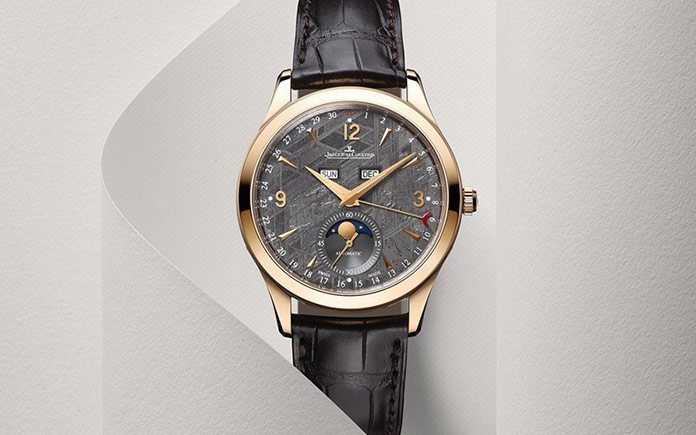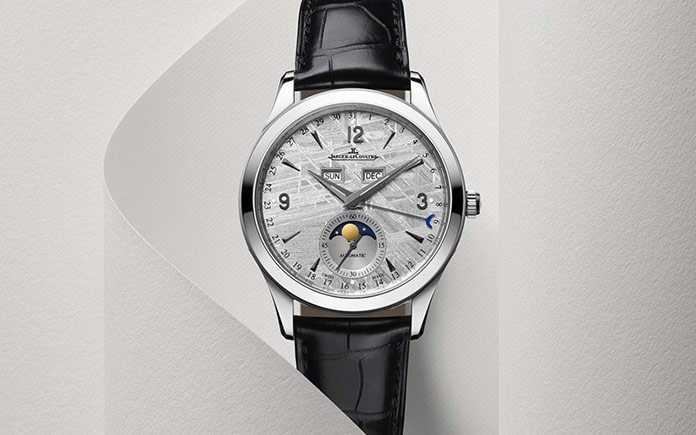The new Master Calendar of Jaeger-LeCoultre is distinguished by the virtues and indeed the very face of astronomy. Endowed with all the attributes that have forged the success of this line, it is also imbued with a seductive appeal exercising its own laws of gravity, thanks to the choice of meteorite stone to compose its dial.
On this new watch, the strange and fascinating meteorite stone used for the dial shakes up the traditionally pure, understated aesthetic of the Master Calendar. Composed of a single block of meteorite discovered and officially registered in Sweden, it comes from the asteroid belt between Mars and Jupiter.
However, its iron content makes this material difficult to work with. To get an aesthetically perfect dial, this block of meteorite is cut into several thin plates in a process involving countless precautions, until the exact plate corresponding to the demands imposed by Jaeger-LeCoultre is achieved.
Still in its rough state at this stage, the meteorite must undergo several preparatory phases before revealing the structure of its stone that features a unique pattern shown by each cut. At the end of a lengthy and delicate procedure, it can at last express the beauty that it has stored up across several million years.
The experience is unutterably moving, as if a part of the universe were converging towards the stone dial, at last within reach.
Useful functions
The earth’s spinning on its axis determines the length of the day, while its rotation around the sun defines the year. Likewise, moon phases – and the 29-day approximate gap between two new moons – are behind the duration of the week and month. Each major civilisation has sought to convey through a calendar the various celestial movements it has observed.
Calendar-related indications are among the most useful a watch can offer. Representing the iconic calendar complication, the complete calendar of the Master Calendar model displays the perpetual calendar by means of a long hand tipped with a moon crescent sweeping around a scale around the dial rim graduated from 1 to 31.
It also indicates the day of the week and the month in twin apertures at 12 o’clock. Featured on certain Renaissance pocket watches before being more widely used in the 19th century, this numerical display principle serves to catch attention and focus it firmly on the present.
Finally, the complete calendar indicates the various moon phases – new moon, first quarter, full moon and last quarter – in the traditional form of this emblematic heavenly body emerging from between two clouds and rising up against a star-studded sky.
Carefully balanced visual effect
Everything is governed by a will to achieve the right balance between watchmaking expertise, aesthetic elegance and optimal comfort. With a 39 mm-diameter, this10.6 mm-thick case is designed to adapt to the curve of any wrist.
Its subtle discretion could easily make one forget the considerable efforts deployed by the master artisans in fitting an automatic movement with a full calendar inside such a pleasantly sized case. This concern for detail runs all the way to the very heart of the watch.
The sapphire crystal case-back of the Master Calendar reveals the intricate workings of Jaeger-LeCoultre Calibre 866 and its delicate finishes testifying to infinite patience. They reflect the soul and the rigorous discipline of the artisans exercising their craft in the Manufacture based in the Vallée de Joux, for whom every gesture is imbued with true meaning.















